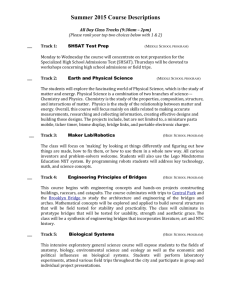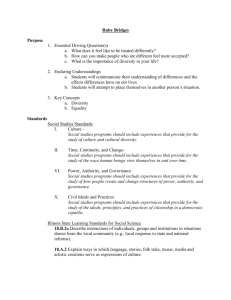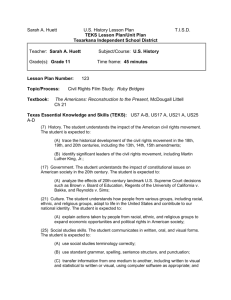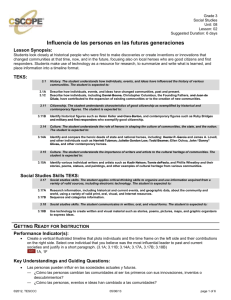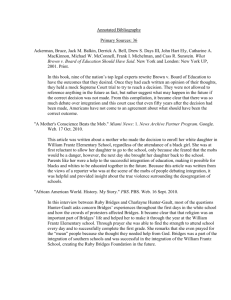Sample Activities and Assessments
advertisement
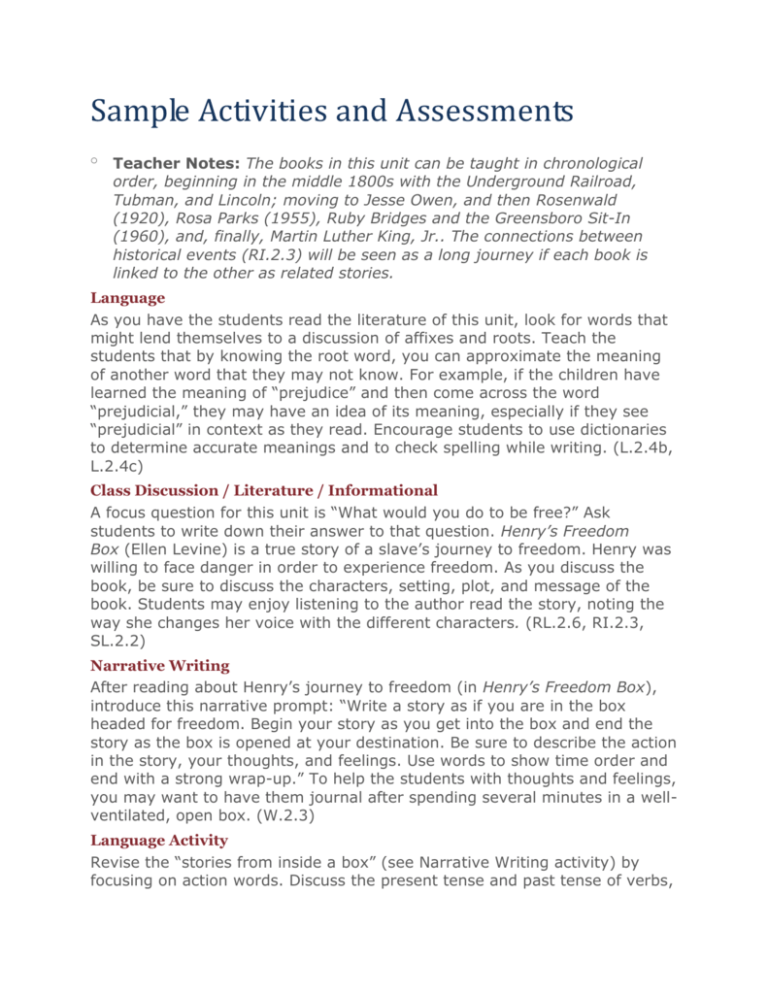
Sample Activities and Assessments o Teacher Notes: The books in this unit can be taught in chronological order, beginning in the middle 1800s with the Underground Railroad, Tubman, and Lincoln; moving to Jesse Owen, and then Rosenwald (1920), Rosa Parks (1955), Ruby Bridges and the Greensboro Sit-In (1960), and, finally, Martin Luther King, Jr.. The connections between historical events (RI.2.3) will be seen as a long journey if each book is linked to the other as related stories. Language As you have the students read the literature of this unit, look for words that might lend themselves to a discussion of affixes and roots. Teach the students that by knowing the root word, you can approximate the meaning of another word that they may not know. For example, if the children have learned the meaning of “prejudice” and then come across the word “prejudicial,” they may have an idea of its meaning, especially if they see “prejudicial” in context as they read. Encourage students to use dictionaries to determine accurate meanings and to check spelling while writing. (L.2.4b, L.2.4c) Class Discussion / Literature / Informational A focus question for this unit is “What would you do to be free?” Ask students to write down their answer to that question. Henry’s Freedom Box (Ellen Levine) is a true story of a slave’s journey to freedom. Henry was willing to face danger in order to experience freedom. As you discuss the book, be sure to discuss the characters, setting, plot, and message of the book. Students may enjoy listening to the author read the story, noting the way she changes her voice with the different characters. (RL.2.6, RI.2.3, SL.2.2) Narrative Writing After reading about Henry’s journey to freedom (in Henry’s Freedom Box), introduce this narrative prompt: “Write a story as if you are in the box headed for freedom. Begin your story as you get into the box and end the story as the box is opened at your destination. Be sure to describe the action in the story, your thoughts, and feelings. Use words to show time order and end with a strong wrap-up.” To help the students with thoughts and feelings, you may want to have them journal after spending several minutes in a wellventilated, open box. (W.2.3) Language Activity Revise the “stories from inside a box” (see Narrative Writing activity) by focusing on action words. Discuss the present tense and past tense of verbs, focusing particularly on irregular verbs such as “I hide, I hid” and “I sit, I sat.” (L.2.1d) Class Discussion / Poetry The poems about Harriet Tubman (“Harriet Tubman,” Eloise Greenfield) and Abraham Lincoln (“Lincoln,” Nancy Byrd Turner) are narrative poems that tell a story. Use these questions to discuss the poems: How are the poems similar and how are they different? What poetic elements do you hear/see in the poetry (e.g., alliteration, repetition, regular beats, and rhyme)? What is the message of each poem? Are they similar or different? Which of the poems uses formal English and which one uses more informal English? (L.2.3a, RL.2.4) Class Discussion / Informational Text Read aloud the two supplied texts about Ruby Bridges (Ruby Bridges Goes to School and The Story of Ruby Bridges). Before reading, explain that one of the books is an autobiography(Ruby Bridges Goes to School: A True Story) that Bridges wrote about her own experiences. Explain that the other book,The Story of Ruby Bridges, is biographical, which means that an author wrote the book about Bridges’s life. When you finish reading each book aloud, have the students choose the most important parts of the story. Then, have them compare how the books are similar and how they are different. (There are several other opportunities to do this compare/contrast activity, or assessment, with the Greensboro Sit-In and Martin Luther King, Jr. texts.) (RI.2.3, RI.2.9, SL.2.3) Class Discussion / Art Appreciation While the class is focused on Ruby Bridges, show the students some photographs of Bridges and the Norman Rockwell painting, “The Problem We All Live With,” which was painted after a photograph of her. Use these questions to discuss the title and the painting: Do you think it is a good name for the painting? Why or why not? Knowing the story of Ruby Bridges, what details from her character can you see in the painting? (Note: You should look for adjectives and character vocabulary in the conversation.) (L.2.5b, L.2.6, SL.2.3) Opinion Writing Give the students this prompt: “Choose one of the people studied in this unit who you think is the greatest hero in this long journey to freedom. Draw a detailed picture of the person. Write an opinion piece introducing the person and giving strong reasons why you chose her or him. Give two or three reasons why the person was chosen, using words like “because” and “also.” Use as many details as you can and close your piece with a strong statement.” (W.2.3) Writing / Media Students can publish their opinion pieces by scanning the drawing and putting it into a Power Point slide. Opinion pieces should be recorded and played as the drawing is projected. These slides and recordings could be posted on a web page to be viewed by friends and relatives. Arrange the Power Point slides chronologically to reinforce the linking of ideas in this long journey to freedom. (W.2.6, SL.2.5)


